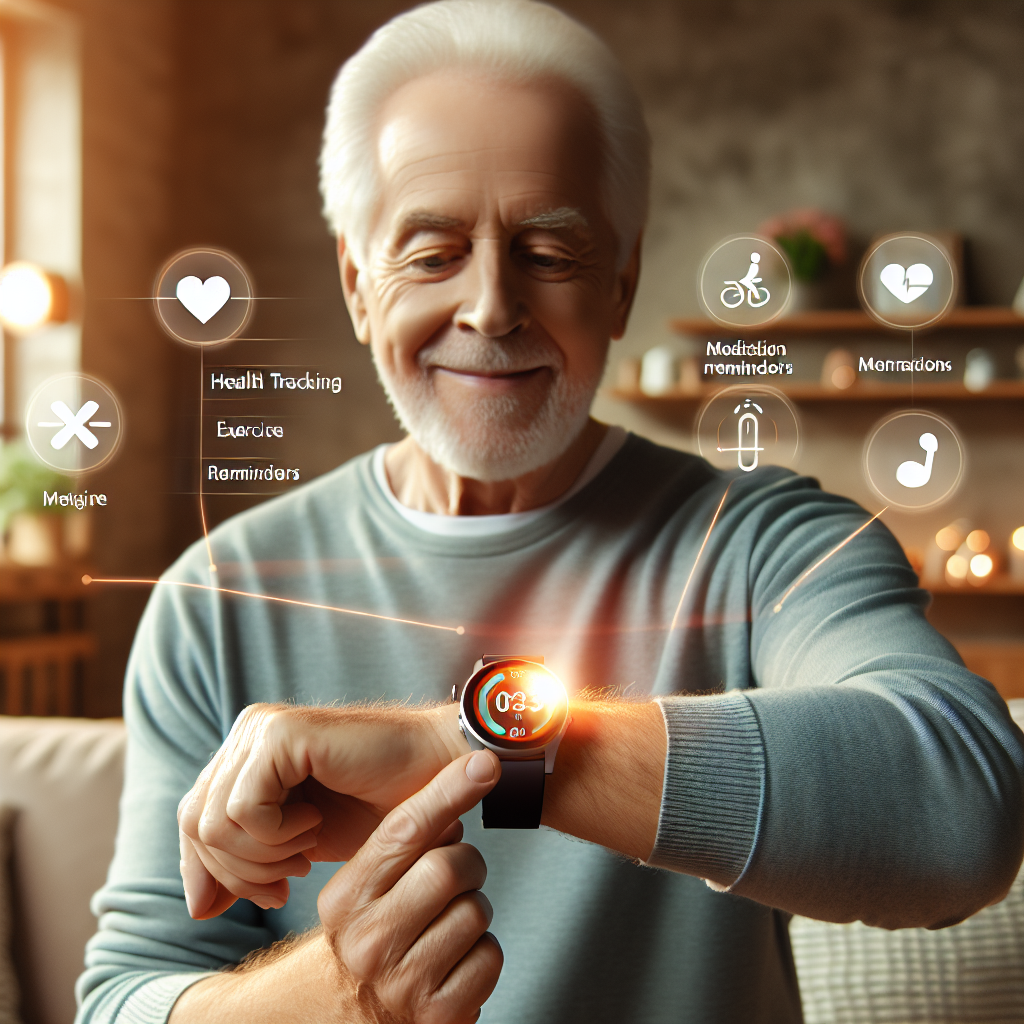In a world where technology keeps shrinking and getting smarter, our older loved ones are finding unexpected allies in their journey of aging gracefully. Wearable tech – those sleek smartwatches and fitness trackers that have become second nature to younger generations – are now transforming how seniors experience retirement life. These aren’t just fashion accessories with digital faces; they’re powerful tools helping more active, tech-savvy seniors maintain their independence while aging in place. For many older adults, the thought of leaving their beloved homes for assisted living facilities feels like surrendering a piece of their identity. That’s where these wrist-worn wonders come in, offering a gentle bridge between complete independence and the compassionate support many eventually need. For caregivers, these devices provide peace of mind without hovering or intruding on their parents’ daily routines. The beauty of today’s senior-friendly wearables lies in how they blend into everyday life while silently monitoring health, detecting falls, and even encouraging positive aging through gentle reminders to stay active. As we at SilverSmart have discovered through our work with seniors, technology doesn’t need to be complicated or intimidating to make a profound difference in elderly care. Sometimes, the most powerful support comes in the smallest packages, wrapped around a wrist and quietly empowering our parents and grandparents to live their golden years exactly where they want to be – at home.
The Intuitive Evolution of Wearable Tech
Wearable tech isn’t just getting smarter—it’s getting more intuitive for seniors who want to maintain their independence. Let’s look at what these devices can actually do beyond telling time and counting steps.
Health Monitoring: A Pillar for Aging in Place
Health monitoring is perhaps the most valuable feature for aging in place. Today’s smartwatches don’t just track steps; they monitor heart rates, detect irregular rhythms, measure blood oxygen levels, and even perform ECG readings. My neighbor Martha, 78 and fiercely independent, laughs about how her watch “knows when I’m slacking on my daily walks.” But she became a true believer when her smartwatch detected an irregular heartbeat that led to an early diagnosis of atrial fibrillation.
Enhancing Safety in Retirement Life
Safety features in these devices are game-changers for retirement life. Fall detection technology uses sophisticated sensors to identify when someone has taken a tumble. As one 82-year-old user told me, “I used to worry about falling when no one was around. Now my watch is like having a safety buddy 24/7.” Many devices can automatically call emergency services if they detect a fall and the wearer doesn’t respond—bringing peace of mind to both seniors and their adult children.
AI Integration for Positive Aging
The AI integration in these wearables makes them particularly suited for supporting positive aging. Medication reminders help maintain treatment schedules without the need for family members to make those “Did you take your pills?” calls that can feel infantilizing. Sleep tracking helps improve sleep quality by providing insights into sleep patterns and disturbances. For seniors focusing on fitness tips and active living, these devices offer age-appropriate exercise suggestions and gentle reminders to move throughout the day.
Blending Technology Into Daily Life
What makes these technologies particularly special is how they blend into daily life. Take Ron, who at 70 started using a fitness tracker mainly to humor his daughter. “Now I’m in a step competition with other seniors in my building,” he chuckles. “Yesterday I walked to the grocery store and back just to beat Bob from 3B!” This friendly competition has improved his fitness levels more than any formal exercise program ever did.
The AI elderly assistance features go beyond health monitoring—they’re increasingly sophisticated companions. Some devices now integrate with home systems, allowing voice commands to control lighting, temperature, and even make video calls to family members. When Dorothy, 75, fell and couldn’t reach her phone, she simply asked her smartwatch to call her son. “Technology saved me from lying on the floor for hours,” she says with characteristic frankness.
Providing Peace of Mind to Caregivers
For the “sandwich generation” caring for both children and aging parents, these wearables provide invaluable peace of mind. Adult children can receive alerts about their parents’ activity levels or emergency situations without constant check-in calls that can sometimes feel intrusive to independent seniors. This technology supports a balanced approach to caregiving that respects autonomy while providing safety nets.
Fitness Tips and Active Living for Seniors
The fitness for seniors features in modern wearables are particularly impressive, offering tailored recommendations that account for mobility limitations and health conditions. Unlike generic fitness advice, these AI-powered suggestions adapt to the individual’s capabilities and progress, encouraging sustainable active living that supports both physical and mental well-being during retirement years.
Wearable Technology: The Future of Aging in Place
As we look toward the future of aging in place, wearable technology stands as a powerful ally in the journey of growing older with dignity and independence. These devices aren’t just gadgets—they’re transforming retirement planning by giving seniors and their families practical tools to extend independent living safely. The data from health monitoring features can help inform decisions about when additional support might be needed, while the emergency response capabilities create a safety net that makes aging at home a more viable option for many.
Impact on Quality of Life
The impact of wearables on overall quality of life cannot be overstated. By supporting active living and positive aging, these technologies align perfectly with what research shows contributes to longevity and happiness in our later years. As Dr. Margaret Klein, gerontologist and retirement planning specialist, notes: “The seniors who thrive in retirement are those who maintain social connections, physical activity, and a sense of purpose—wearable technology supports all three.”
Joyful Aging with Technological Support
At SilverSmart, we’ve seen firsthand how blending gentle technological support with traditional approaches creates the ideal environment for joyful aging. Our Senior Fitness AI Companion works wonderfully alongside wearable tech, creating a comprehensive support system that honors independence while providing personalized guidance. When Joan, 79, began using both her smartwatch and our AI Companion, she told us, “For the first time in years, I feel like I’m in charge of my health instead of my health being in charge of me.”
Evolving with Changing Needs
The beauty of incorporating wearables into retirement life is how they can grow with changing needs. Many seniors start with basic step counting and gradually adopt more advanced features as they become comfortable with the technology. This gentle on-ramp to tech adoption makes these devices particularly suitable for seniors who might initially be hesitant about embracing new technologies.
Financial Considerations in Retirement Planning
Financial considerations are important too. When planning for retirement, many people overlook how technology investments can actually reduce long-term care costs. A quality smartwatch with fall detection and health monitoring capabilities costs far less than a single month in an assisted living facility. This makes wearable tech not just a lifestyle choice but a practical financial decision in retirement planning.
For family members concerned about their parents aging in place, suggesting wearable technology offers a way to initiate important conversations about safety and independence without immediately jumping to more drastic measures like relocation. As one adult daughter shared, “Dad was resistant to any talk of moving or in-home care, but he was open to trying a smartwatch. That small step opened the door to more conversations about his long-term plans.”
Evolving AI Support for Seniors
The integration of AI for elderly support through these devices continues to evolve in exciting ways. Voice assistants that understand the speech patterns of older adults, interfaces designed for those with visual or dexterity challenges, and increasingly sophisticated health monitoring all point to a future where aging in place becomes more accessible to more seniors.
Embracing Wearable Technology for Joyful Aging
As we at SilverSmart continue our mission of empowering joyful aging at home, we see wearable technology as a natural extension of our philosophy. These devices, like our own services, recognize that aging well isn’t about denying the challenges that come with growing older—it’s about finding innovative solutions that preserve dignity, independence, and joy.
If you or your parents are considering ways to enhance retirement life while staying at home, exploring wearable technology options might be the perfect first step. These unobtrusive devices offer a gentle introduction to how technology can support positive aging, potentially opening the door to other innovations that make aging in place not just possible, but truly fulfilling. After all, home isn’t just where the heart is—it’s where most of us hope to enjoy our golden years, surrounded by the people, memories, and comforts that make life sweet.

